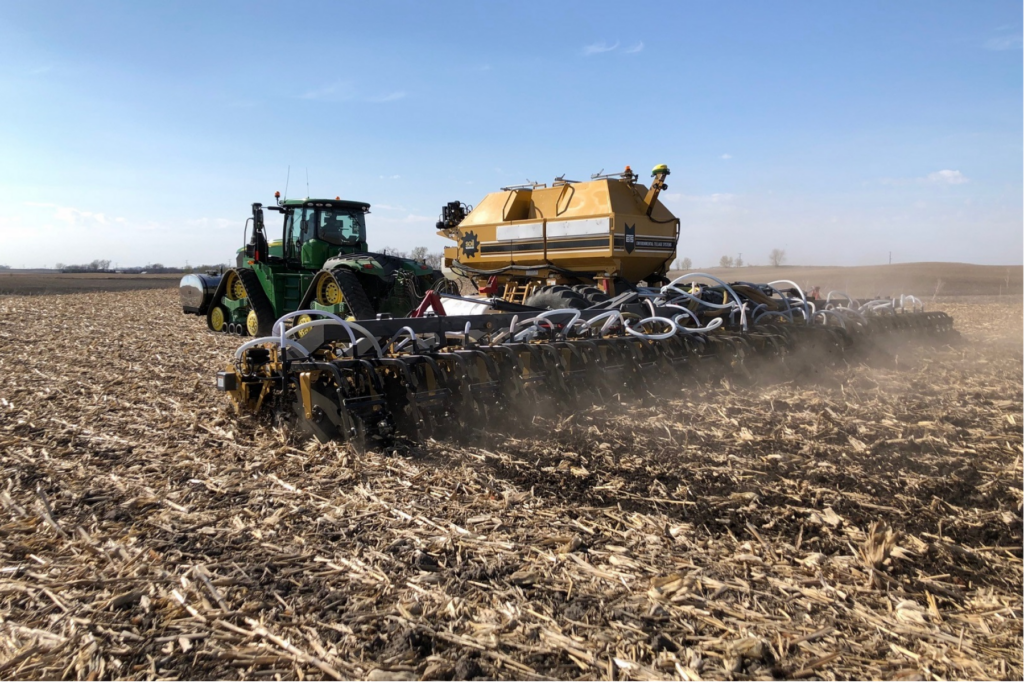There is increasing interest among growers in our area regarding the practice of strip-till. In response to this increasing demand, NuWay K&H Cooperative has begun offering strip-till as a service starting in the Fall of 2023. Have you considered devoting a certain number of your acres to strip-till farming?
Strip-Till Explained
The aim of strip-till farming is to use a minimum amount of tillage, which supports soil sustainability and combats erosion by disturbing only the portion of the soil where the seed row will be placed. This practice keeps the natural soil microbial activity at peak performance, among many other benefits that support the soil’s health. It also provides a way to make nutrient applications more precise. With strip-till, fertilizer is evenly distributed in a zone surrounding the plant’s primary root system, which optimizes uptake by placing nutrients where they can be most efficiently accessed by the plant. With the proper equipment, strips can be effectively made in the fall or spring.
What are the Benefits
Strip-till can be an option for you if your soil types can handle a less aggressive tillage system and not sacrifice yield or optimal nutrient placement below the soil.
Strip-till benefits can include:
- Decreased cost of production by combining 3 standard farming practices into one. With strip till, fertilizer application, fall tillage, and spring tillage are all combined into a single pass.
- Better water-holding capacity and water infiltration with increased organic matter and better soil structure. This results in less water ponding, less runoff, and less irrigation needed on strip-till acres.
- The potential for earlier spring planting. Since tillage and fertility are often done in the fall, fields are ready for planting as soon as soil conditions are warm enough.
- Enhanced weed control as a result of less soil disturbance, less weed seed being brought to the surface to germinate, and more ground cover – especially when integrating cover crops.
- Increased yield potential through nutrient placement efficiency. Plants can access needed nutrients more readily, especially during the rapid growth phases of development.
- Decreased need for supplemental labor by eliminating tillage passes and increasing efficiencies. People in the operation can focus on other important tasks that need to be completed on the farm during busy harvest and planting seasons.
- Opportunities to participate in carbon capture and reduced carbon intensity programs which can provide financial incentives to growers based on the sustainable farming practices implemented.
Flexibility is Important
Strip-till is not a one-size-fits-all practice. Within your operation, you likely have fields that are better suited for strip-till while others may require standard tillage practices. Being flexible with your tillage plans helps create less stress in season. Weather, geography, and farm goals are a few things that can play a big factor when determining tillage methods. The more we can protect soil structures and prevent erosion, the healthier the fields will be in the long term. It’s not going to look the same for every farm, but we should strive to do the least amount of tillage possible where we can while still incorporating the amount of residue needed to allow soils to warm up appropriately in the spring.
Talk with your Agronomy Account Manager to see if strip-till makes sense to try on your operation. If you’re interested in advancing sustainability, promoting better soil health, and being more efficient with fertility and moisture on your farm, there is a lot to be said about this method.


